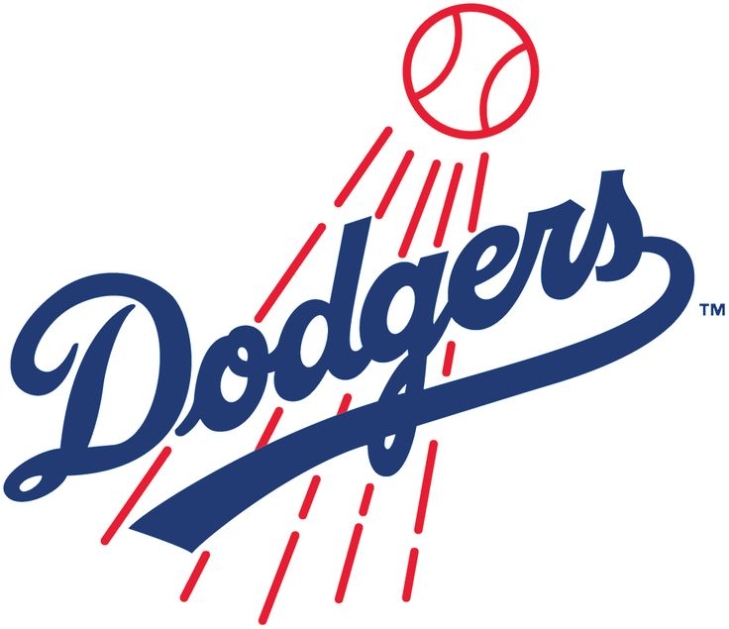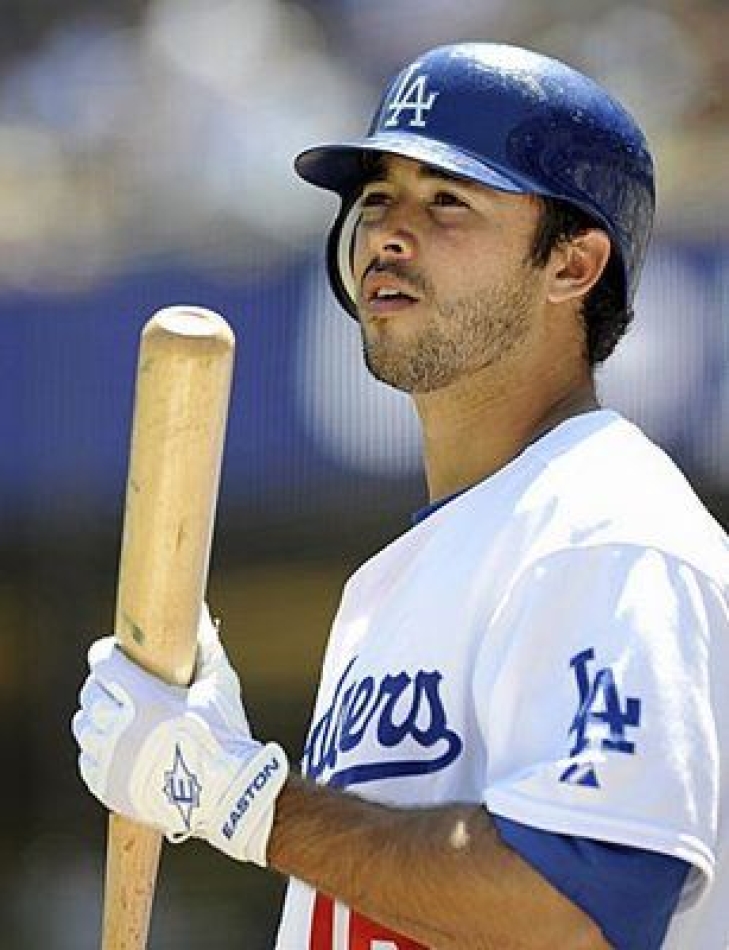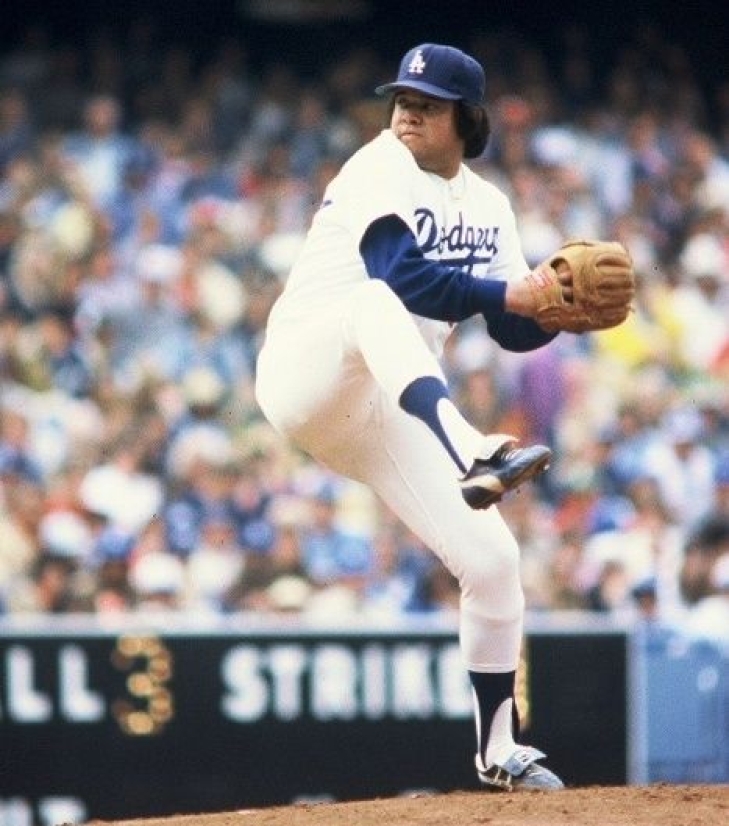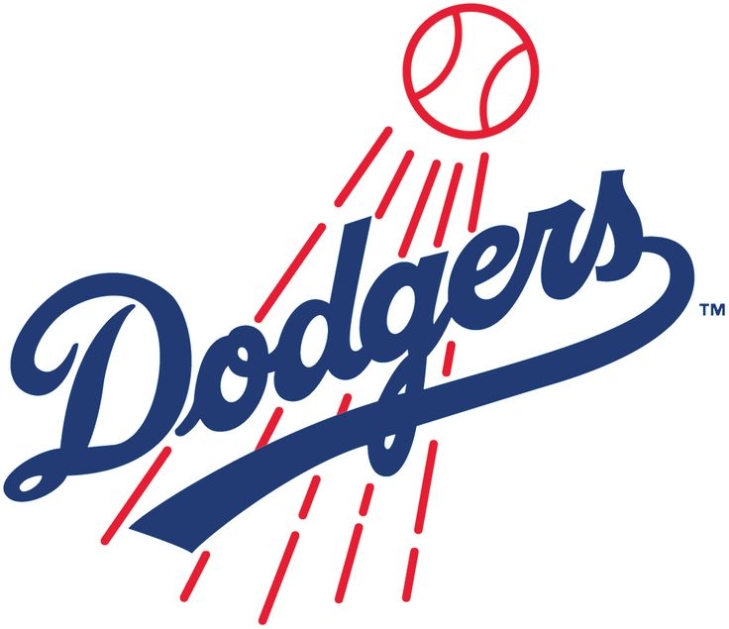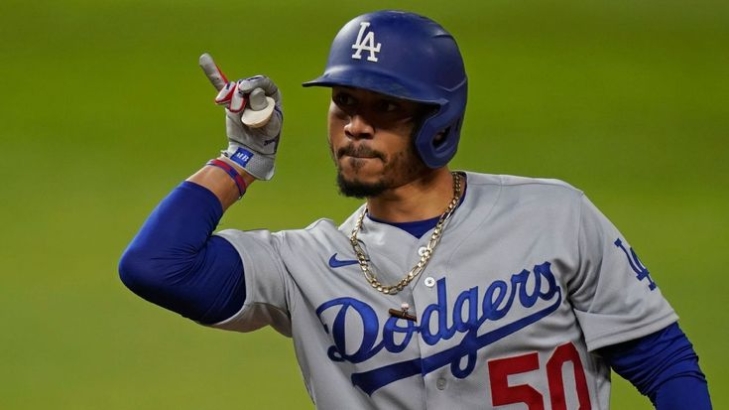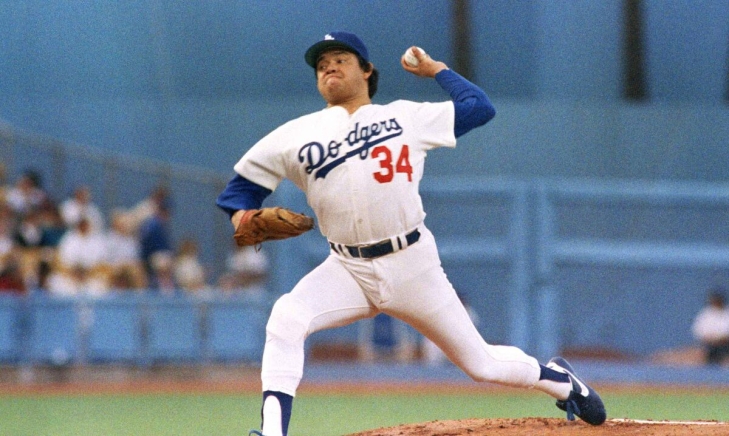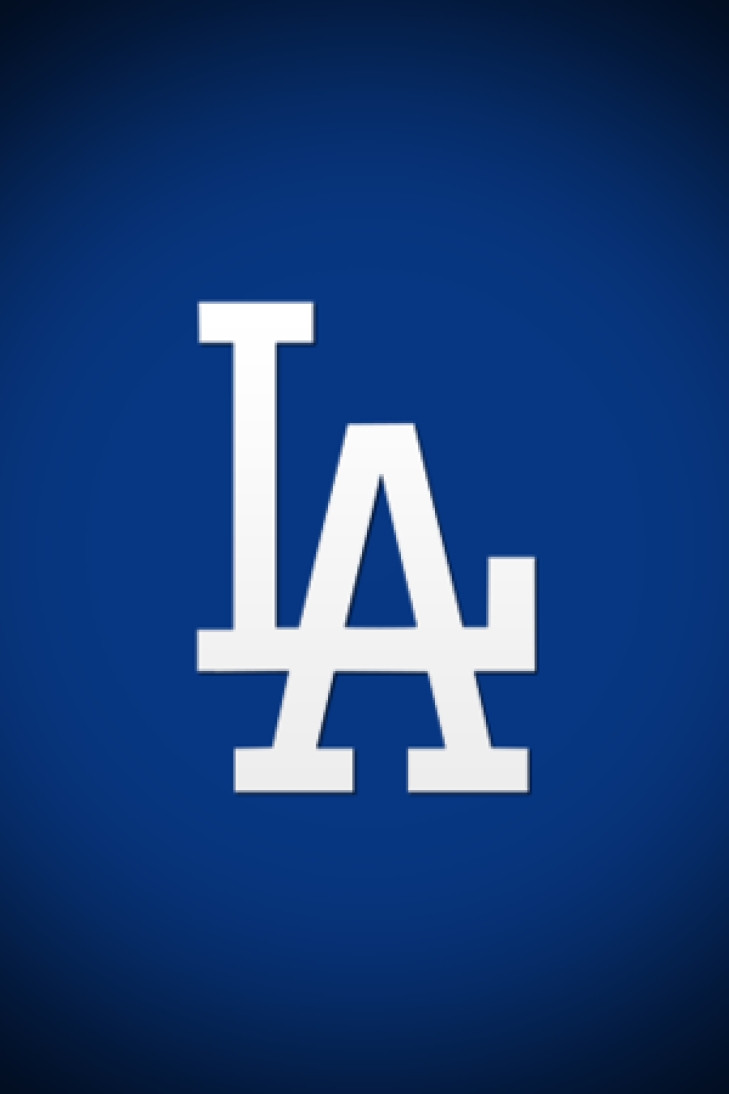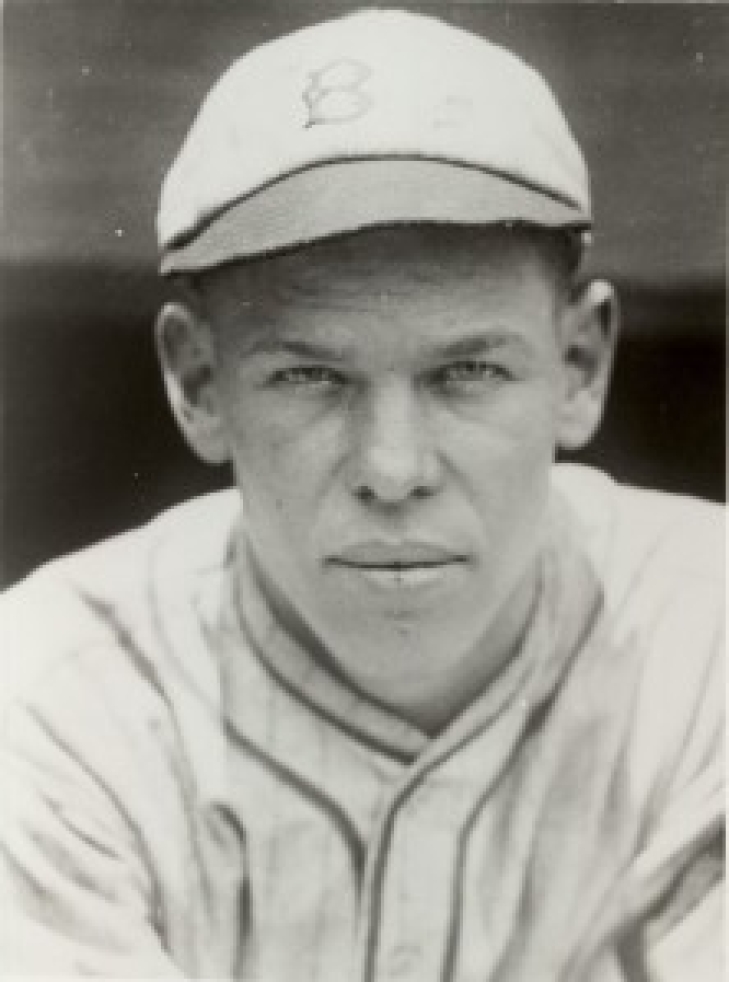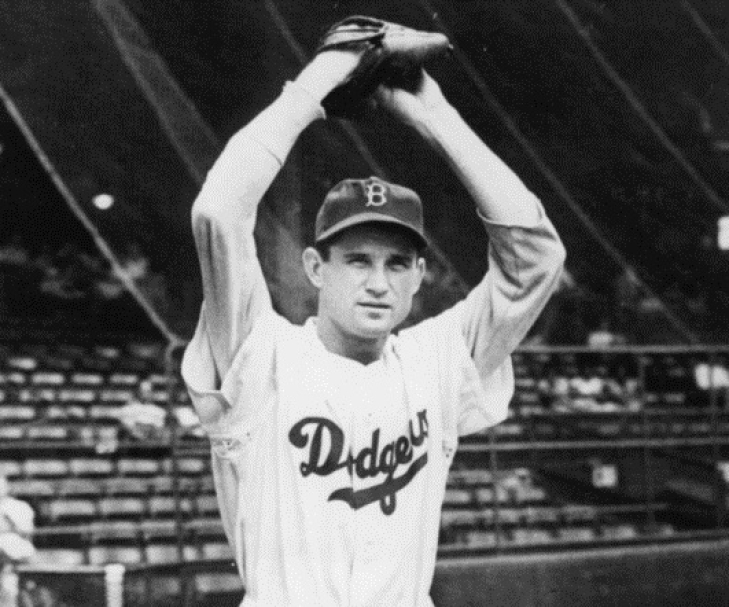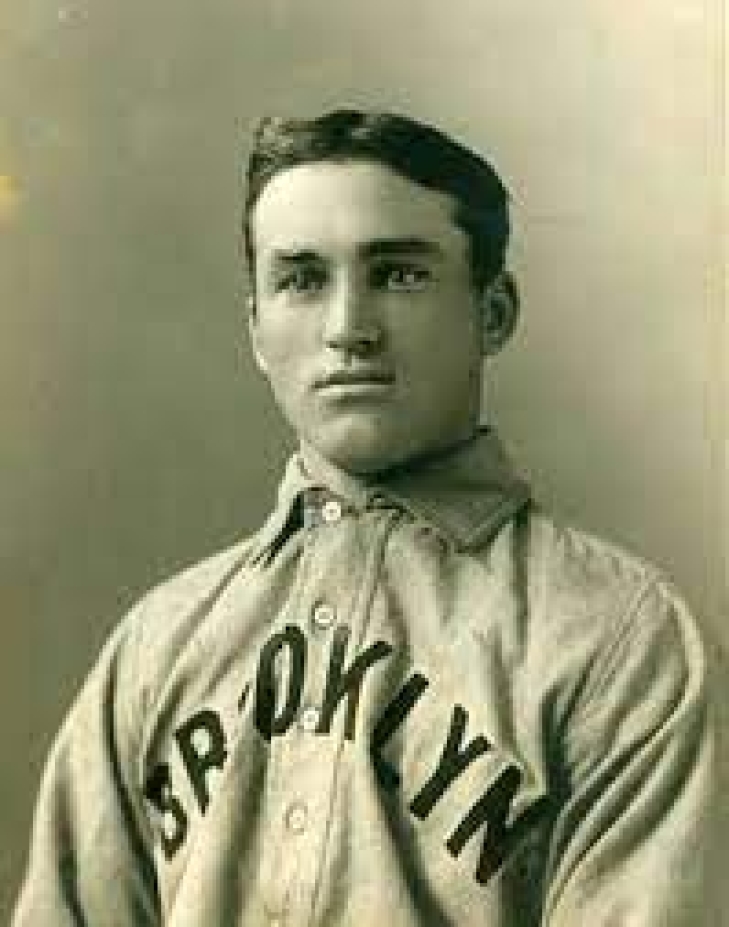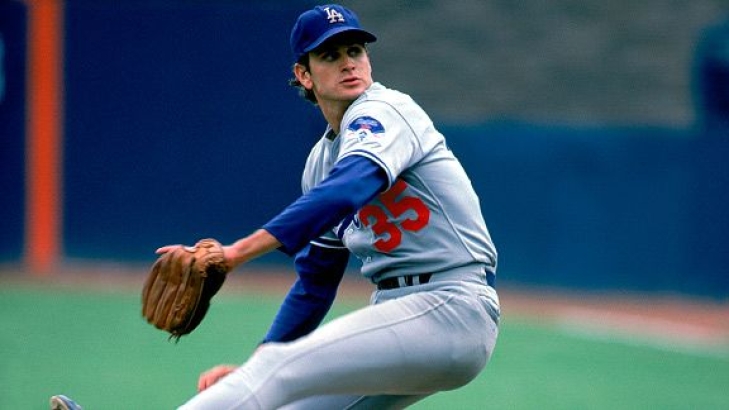Our All Time Top 50 Los Angeles Dodgers have been revised to reflect the 2024 Season
Yes, we know that this is taking a while!
As many of you know, we at Notinhalloffame.com are slowly generating the top 50 of each major North American sports team. That being said, we have existing Top 50 lists and consistently look to update them when necessary and based on necessity. As such, we are delighted to present our post-2024 revision of our top 50 Los Angeles Dodgers.
As for all of our top 50 players in baseball, we look at the following:
1. Advanced Statistics.
2. Traditional statistics and how they finished in the National League.
3. Playoff accomplishments.
4. Their overall impact on the team and other intangibles that are not reflected in a stat sheet.
Please note that our algorithm has changed, which yielded minor changes throughout the baseball lists.
Last year, the Dodgers went all in on Shohei Ohtani, and it paid off immediately with the Los Angeles winning the World Series, by defeating the New York Yankees. Amazingly, there were no new entrants based on 2024, though Max Muncy and Freddie Freeman were close. Despite winning the MVP, on a team as old and as successful as the Dodgers, Ohtani is not ranked.
As always, we present our top five, which saw two changes based on the new algorithm.
3. Sandy Koufax
4. Don Drysdale
5. Duke Snider
You can find the entire list here.
Within the top five, Robinson rockets up to #2 from #6. His importance in the game could easily place him at the top, but that is another list completely.
Mookie Betts shot up from #46 to #31 and with the new algorithm, Outfielder Andre Ethier comes in at #50.
We thank you for your continued support of our lists on Notinhalloffame.com.
50. Andre Ethier
From Arizona State, Andre Ethier was drafted by the Oakland Athletics, but while he was still in the minors, he was traded to the Dodgers, which would be the only MLB team he ever played for.
Ethier won the starting Leftfield job in 2006 Spring Training, and finished fifth in NL Rookie of the Year voting. He peaked from 2009 to 2012, finishing sixth in MVP voting with his only 30 HR/100 RBI year (31 HR/106 RBI), and was an All-Star the next two seasons.
Retiring in 2017, Ethier compiled 1,367 Hits and 162 Home Runs.
RIP: Fernando Valenzuela
One of the Los Angeles Dodgers' legendary pitchers passed away days before the Dodgers will face the New York Yankees in the 2024 World Series.
Fernando Valenzuela, who took over the hearts of Los Angeles in the early 80s, passed away yesterday. He was 63 years old.
From Navojoa, Mexico, Valenzuela was a late call-up in 1980. Due to an injury to Jerry Reuss on the eve of the 1981 Opening Day, he got the call and began the season by winning his first eight decisions. He finished the season as 13-7 with a league-leading 190 Strikeouts and would win the National League Rookie of the Year and Cy Young Award. The Dodgers won the World Series that year, and Fernandomania was the toast of the baseball world.
Valenzuela did not speak English when he was called up, and his portly body did not look athletic at all. Still, he had an infectious smile and undeniable charisma, and he became a fan favorite among all Dodgers fans, Hispanic or not.
He went on to have three more top-five Cy Young finishes, was a six-time All-Star, a two-time Silver Slugger, and a one-time Gold Glove winner. Valenzuela also played for California, Baltimore, Philadelphia, San Diego, and St. Louis and had a record of 173-152 with 2,074 Strikeouts. Following his playing career, Valenzuela worked for the Dodgers on their Spanish Language broadcasts, and stepped aside a week ago to focus on his health.
We here at Notinhalloffame.com would like to extend our condolences to the fans, friends and family of Fernando Valenzuela.
Our All-Time Top 50 Los Angeles Dodgers have been revised to reflect the 2023 Season
Yes, we know that this is taking a while!
As many of you know, we here at Notinhalloffame.com are slowly generating the 50 of each major North American sports team. That being said, we have existing Top 50 lists out and we always consistently look to update them when we can and based on necessity. As such, we are very happy to present our post 2022/23 revision of our top 50 Los Angeles Dodgers.
As for all of our top 50 players in baseball we look at the following:
1. Advanced Statistics.
2. Traditional statistics and how they finished in Major League Baseball.
3. Playoff accomplishments.
4. Their overall impact on the team and other intangibles not reflected in a stat sheet.
Last year, the Dodgers had another great year, with a playoff run, but in their current state, anything other than a World Series Championship is a failure. The 2023 season gave us one new entry.
As always, we present our top five, which saw no changes.
2. Sandy Koufax
3. Duke Snider
4. Don Drysdale
5. Dazzy Vance
You can find the entire list here.
This is one of the hardest lists to do, and we know positioning Kershaw at the top is controversial considering the legends that he beat out. Statistically, we can defend it, but in terms of overall legacy, it would be different.
The lone new entrant was last year’s National League runner-up, Mookie Betts, who debuts at #44.
As always, we thank you for your support, and look for more revisions in the future.
31. Mookie Betts
Mookie Betts was a star with the Boston Red Sox and a lot of heads were scratched in New England when they traded him to the Los Angeles Dodgers. They will remain befuddled to the end of time.
Betts’ first year in L.A. was the COVID-shortened year where he led his new team to a World Series Championship. Finishing second in MVP voting, Betts also won his first National League Gold Glove and Silver Slugger that year. An All-Star in 2021, Betts lost some time due to injury but was healthier again in 2022, where he belted 35 Home Runs, was fifth in MVP voting and won another Gold Glove and Silver Slugger.
In 2023, Betts had his best season to date in a Dodgers uniform and made a late-season surge for the MVP, though he was second to Atlanta’s Ronald Acuna. He secured his third straight All-Star, batted over .300 for the first time in the NL (.307) and had a career-high 39 Home Runs. Betts needed another trophy case adding another Silver Slugger his collection. Last year, Betts again reveived MVP votes (13th), won a Silver Slugger and collected his fourth straight All-Star appearance, but more importantly was a critical piece in LA.'s 2024 World Series Title.
Entering 2025, Betts is a top five player on a top team. Imagine how high on this list he would be if he only wore Dodger blue!
The Los Angeles Dodgers will retire Fernando Valenzuela's #34 this August
Regular visitors of Notinhalloffame.com know that we are slowly working on the top 50 of every major team in the NHL, NBA, NFL and MLB. Once that is done, we intend to look at how each team honor their past players, coaches and executives. As such, it is important to us that the Seattle Mariners have announced that the Los Angeles Dodgers will retire Fernando Valenzuela’s #34 this August.
The Dodgers accidentally discovered Valenzuela as they were scouting a Shortstop in Mexico. They were dazzled by the rotund hurler and signed him, buying out his Mexican League contract in 1979. A year later, he was a September callup, and in 17.2 Innings, he never allowed a run. It didn't take a clairvoyant to see what might happen in 1981.
"El Toro" helped the Dodgers win the 1981 World Series. That season, he won the Rookie of the Year and Cy Young, making him the first player to accomplish that in the same year. Valenzuela was the opening day starter, and everyone in Los Angeles took the Mexican star to heart.
The mania surrounding Valenzuela cooled, but he was still an elite pitcher for many years. He was an All-Star each year from 1981 to 1986, and he had three more top-five finishes in Cy Young voting. Valenzuela would have three 200 Strikeout years, and he was also a decent batter, winning two Silver Sluggers, as well as aiding L.A to a World Series win in 1988.
Valenzuela will join Pee Wee Reese, Tommy Lasorda, Duke Snider, Gil Hodges. Jim Gilliam, Don Sutton, Walter Alston, Sandy Koufax, Roy Campanella, Jackie Robinson and Don Drysdale who have their number retired by the Dodgers.
Pitchers had better careers, but many of those never captured the imagination of baseball fans like Fernando Valenzuela.
We here at Notinhalloffame.com would like to congratulate Fernando Valenzuela for this impending honor.
Our All-Time Top 50 Los Angeles Dodgers are now up!
Yes, we know that this is taking a while!
As many of you know, we here at Notinhalloffame.com are slowly generating the 50 of each major North American sports team. We have a new one to unveil today, that of the Los Angeles Dodgers.
One of the most celebrated franchises in all sports, the Los Angeles Dodgers were initially the Brooklyn Grays in 1883, but it was a long time before they found an identity.
The organization changed its name multiple times since its origin, the Atlantics (1884), back to the Grays (1885-87), then the Bridegrooms (1888-90), the Grooms (1991-95), the Bridegrooms again (1895-98, the Superbas (1899-1910), the Trolley Dodgers (1911-12), then the Dodgers (1913), the Robins (1914-1931), before settling on the Dodgers again in 1932.
The Brooklyn Dodgers would sign Jackie Robinson to integrate baseball, and in 1955, on their eighth attempt, they finally won their first World Series.
The fans of Brooklyn were not rewarded for their loyalty and patience, and like the crosstown New York Giants, westward the Dodgers went in 1957, where they remain to this day.
In Los Angeles, the Dodgers won three World Series Titles in their first ten years in the new environment, capturing it all in 1959, 1963, and 1965. The 1970s saw them competitive at the decade's end, and they won two more Championships in the 1980s (1981 and 1988).
In recent years, the Dodgers have been a top team, with their last World Series win coming in 2020, giving them seven in total.
Our Top 50 lists in Baseball look at the following:
1. Advanced Statistics.
2. Traditional statistics and how they finished in the National League.
3. Playoff accomplishments.
4. Their overall impact on the team and other intangibles not reflected in a stat sheet.
Remember, this is ONLY based on what a player does on that particular team and not what he accomplished elsewhere and also note that we have placed an increased importance on the first two categories.
This list is updated up until the end of the 2022 Season.
The complete list can be found here, but as always, we announce our top five in this article. They are:
1. Clayton Kershaw
2. Sandy Koufax
4. Duke Snider
5. Dazzy Vance
We will continue our adjustments on our existing lists and will continue developing our new lists.
Look for our more material coming soon!
As always, we thank you for your support.
49. Babe Herman
The first six seasons (1926-31) of Babe Herman’s career were an impressive blend of Batting Average and power, leading to high popularity among the Robins fans.
Herman debuted in 1926, becoming an everyday player as a rookie, and he was a good batter with a .319, 35 Doubles, and 11 Home Runs. Dropping to .272, Herman went on a three-year streak where he batted at least .340. As good as he became as a hitter, he was also known for his eccentric behavior and basepath blunders; he twice stopped to watch Home Runs go over the wall and was passed on the basepaths, and once failed to watch what was happening ahead of him, leading to three men on Third Base.
Regardless of Herman's daffiness, he was still a player who batted .381 in 1929, and in 1930, he broke that by batting .393 with career-highs in Home Runs (35) and RBIs (130), and astoundingly, he never received a single Hall of Fame vote. Herman dropped to .313 in 1931 and was still very good offensively, but the Robins looked to go in a different direction and traded Herman to the Reds after the season.
Had Herman been a better defensive player (he never had a season with a positive Defensive bWAR in Brooklyn and was often error-prone), he would be ranked much higher, but as it stands, he was a very good player at a time when Brooklyn did not have much.
As a Robin, he batted .339 with 1,093 Hits and 112 Home Runs.
47. Mike Scioscia
Mike Scioscia played his entire career with the Los Angeles Dodgers, showing cerebral prowess, the ability to manage a pitching staff, and good enough hitting for a team as celebrated as the Los Angeles Dodgers kept him for well over a decade and the entirety of his MLB career.
Catchers are expected to be cerebral, but Scioscia took that to another level by learning Spanish to best communicate with the Dodgers ace, Fernando Valenzuela. A two-time All-Star, Scioscia was considered one of the best in his era in handling a pitching staff, and he did compile 1,131 Hits offensively for Los Angeles. A World Series winner in 1988, Scioscia later became a successful Manager, winning two Manager of the Year Awards and a World Series in 2002 as the Angels' skipper.
48. Pete Reiser
"Pistol" Pete Reiser might be one of the biggest "what could have been" in Dodger history, as very few players on the diamond lost greatness so quickly due to injuries.
Reiser was pegged to be a star by St. Louis Cardinals management, and they were dismayed when he was one of the Minor League players that Commissioner, Kennesaw Mountain Landis, deemed free agents. Cardinals GM, Branch Rickey, had an agreement with the Dodgers, who signed Reiser to trade him back to St. Louis, but Brooklyn Kept Reiser, and Rickey, himself, would join Brooklyn in 1943.
Reiser made it to the parent club in 1940, appearing in 58 Games, but he was an everyday player in 1941 and had one of the most explosive campaigns in Dodgers history. He led the NL in Runs (117), Doubles (39), Triples (17), Batting (.343), Slugging (.558), OPS (.964), and bWAR for Position Players (8.0), but was jobbed out of the MVP to Home Run and RBI leader, Dolph Camilli, who was also his teammate. Brooklyn won the Pennant that year but was crushed by the Yankees in five.
Reiser had an interesting 1942, again going to the All-Star Game, but mid-season, he suffered a concussion when he crashed face-first into the outfield wall. He returned but was not the same player for the rest of the season.
Like many other Americans, Reiser served in the U.S. Military and missed three years, but a shoulder injury in an army baseball game hampered his batting. Reiser was still the same player regarding effort, but the oft-injured Outfielder never came close to what he was in 1941. He was traded to the Braves after the 1948 Season, ending his Dodgers run.
Reiser compiled 666 Hits with a .306 Batting Average.
39. Mike Griffin
Mike Griffin was already playing in top baseball leagues for four years, last playing a season in the short-lived Player's League for Philadelphia. The Outfielder joined Brooklyn in 1891 of the National League, the final team he would play for.
Griffin had a great start with the Bridegrooms, leading the NL in Doubles (36) with 65 Stolen Bases. Swiping at least 30 Bases each of the next three years, Griffin began a five-year streak in 1894 where he batted at least .300, which concluded in 1898. To his surprise, Brooklyn merged with Baltimore, and he refused to sign a contract under the new Manager, Ned Harlon. His contract was sold to Cleveland, who then transferred his contract to St. Louis. Griffin would never play again but did win a lawsuit against Brooklyn for money he felt owed $2,300.
His end with Brooklyn was not pretty, but his play was solid, with a .305 Batting Average, 1,168 Hits, and 264 Stolen Bases.
40. Burt Hooton
Burt Hooton cut his teeth with the Chicago Cubs, making their parent club in 1971, but the struggles in Wrigley saw the hurler traded to L.A. early in the 1975 Season. If you are to go by traditional statistics, this was the most fantastic year of Hooton's career, as he went 18 and 9, the best Winning Percentage in the National League.
Hooton remained a Starting Rotation fixture for Los Angeles for years, which included a spectacular year in 1978 where he was the Cy Young runner-up with a career-best in Wins (19), along with a strong ERA of 2.71. Helping the Dodgers win two Pennants in the late 80s, the veteran southpaw remained a viable hurler for L.A., going to his first (and only) All-Star Game in 1981. That year, he helped Los Angeles win the World Series, where he went 1-1 with a 1.59 ERA and won the NLCS MVP, where he earned both decisions by allowing zero runs in 14.2 Innings.
The righthander's career fizzled after the championship, winning only 16 Games over the next three years, and he was demoted to the bullpen in 1984. Hooton left for Texas as a Free Agent in 1984, but that lasted only one year before retiring.
With Los Angeles, Hooton had a 3.14 ERA with 112 Wins against 84 Losses.
43. Preacher Roe
An All-Star with the Pirates in 1945, Elwin “Preacher” Roe made the most of his belated opportunity with the depleted World War II roster, but when the Majors were replenished, the next two years saw his ERA balloon over five, though likely this was the result of the after-effects of a fractured skull he suffered from a fight while refereeing a high school basketball game. Now over 30, it appeared that Roe’s run in the Majors would end shortly, but Dodgers GM, Branch Rickey, had other ideas.
Now a Dodger, healthy, and using an illegal spitball, Roe became a star in their rotation. Roe went to four consecutive All-Star Games (1949-52), peaking with a 22-3 record in 1951, where he was fifth in MVP voting. Brooklyn were contenders, and he helped them win three Pennants (1949, 1952 & 1953), and though there were no Titles in Roe's resume, he had a 2-1 post-season record with a 2.54 ERA.
Age and fatigue caught up to the Preacher, and he never played for Baltimore, the team he was traded to after the 1954 Season. His pitches were slow, but he generated outs for Brooklyn and gave them a scintillating record of 93-37.
45. Ramon Martinez
When you win over 100 Games for the Dodgers, you would think you would be held in higher regard, but Ramon Martinez's long Dodgers tenure did not see a lot of playoff action.
Signed as an amateur Free Agent in 1984, the native of the Dominican Republic was the youngest player in the Majors when he debuted four years later for L.A.. The Dodgers won the World Series that year, though Martinez was not on the roster. He bounced back and forth between the Majors and Minors in 1989 but was a Major League player to stay in 1990, a year that was also his best in Baseball. This season, he was the Cy Young runner-up, All-Star, and the owner of a 20-6 Record, a 2.92 ERA, and 223 Strikeouts.
Martinez did not have an All-Star year again but was still a competent starter for many more years, including three more 15-Win years, but as Los Angeles slipped away from contention, the spotlight was not as intense. He left for Boston as a Free Agent in 1999, leaving behind a record of 123-77 with 1,314 Strikeouts.
34. Claude Osteen
Claude Osteen was a popular southpaw who played most of his career with the Los Angeles Dodgers, though that was his third MLB team after playing for Cincinnati and Washington.
Osteen was traded to the Dodgers after his first solid year with the Senators (1964), and he was more than competent over the next ten years. A three-time All-Star for the Dodgers, Osteen helped Los Angeles win the 1965 World Series, and though he hemorrhaged hits, he always found a way to get more Ws than Ls. Osteen never had a year in L.A. where he won less than 12 Games, and he had 15 Wins in seven of them.
Osteen’s third All-Star year (1973) was his last as a Dodger, as he was traded to Houston, where his career faltered, sputtering with spots in St. Louis and Chicago (AL), and was out of the game in 1975. With the Dodgers, Osteen had a record of 147 and 126 with a 3.06 ERA and 1,162 Strikeouts.
41, Jimmy Sheckard
Jimmy Sheckard played for Brooklyn on three different occasions; though this was in a tight vacuum, you could argue that his first MLB half was indeed with Brooklyn.
Sheckard first appeared for Brooklyn in 1897, becoming a starting Outfield as a sophomore, but he was assigned to the first version of the Baltimore Orioles in 1899, only to be re-assigned back in 1900. He had a very good 1901, putting up career-highs in Hits (196), Triples (19), and the Slash Line (.354/.409/.534), with his total in Triples and Slugging league-leading.
The year after was a little strange, as Sheckard again joined the Orioles (the second incarnation), but it only lasted a handful of Games before he jumped back to the Giants, and had another excellent year in 1903, where he led the NL in Stolen Bases (67) and Home Runs (9), making him the first player to lead the league in those categories.
Traded to the Chicago Cubs after the 1905 Season, Sheckard would win two World Series Titles with the Cubs. With Brooklyn, Sheckard compiled 966 Hits with a .295 Batting Average and 212 Stolen Bases.
36. Brickyard Kennedy
William “Brickyard” Kennedy played for Brooklyn in the first ten (1892-1901) of his 12 years in the Majors, where he won a lot of Games, though he would not dazzle with other statistics.
A four-time 20-Game winner, Kennedy had a very good record for Brooklyn of 177 and 148, but his ERA for the team was 3.98, including a 5.05 year where he still had a 19-12 record. Still, Kennedy did enough to keep his team in games, and Brooklyn batters had enough confidence that he could keep them competitive. He also helped his cause with his offense, batting .256 with 306 Hits in Brooklyn.
Kennedy’s overall numbers may not hold up, but his 177 Wins are still fifth all-time in franchise history, and that means something!
32. Bob Welch
Bob Welch's best year was with his second team, Oakland, but his longest tenure was further south, in Los Angeles, where he served his first ten years of MLB service.
Welch went to his only All-Star Game as a Dodger in 1980 and was an excellent near-the-top-of-the-rotation player for Los Angeles for the rest of his Dodgers tenure. A First Round Pick in 1977 (20th Overall), Welch debuted for L.A. the following year, helping the Dodgers win the pennant. They lost in the World Series, but he put himself on the map with a two-out ninth-inning K on Reggie Jackson.
Welch helped L.A. win the 1981 World Series and, over the next four years, was decent, winning at least 13 Games in each year, including an eighth-place Cy Young finish in 1983 (15-12 2.65 ERA). After a poor 1986, Welch's 1987 was deceptively good, with a 15-9 year and league-leading 7.1 bWAR for Pitchers.
There was still life in his arm, but the Dodgers traded him to Oakland, where he won a second World Series and a Cy Young Award, though, to be fair, Los Angeles won the 1988 World Series without him.
With the Dodgers, Welch compiled a 115-86 Record with a 3.14 ERA and 1,292 Strikeouts.
42. Kenley Jansen
With all due respect to Eric Gagne, who won the Cy Young in 2003, we think that Kenley Jansen is the greatest closer in Dodgers history.
Jansen came to Baseball via Curacao, converting from a Catcher to the Relief Pitcher in the Dodgers minor league system, and six years after he was signed, in 2010, he made his debut for Los Angeles. A flamethrowing closer in the Minors, L.A. knew they would have their ninth-inning guy, and he became that in 2012.
Jansen was solid in this role, seemingly improving every year, and by 2015, he was considered the elite reliever in the NL. From that year to 2018, Jansen kept his WHIP under 0.800, with him finishing over 10.00 in SO/BB twice. An All-Star each year from 2016 to 2018, Jansen was fifth in Cy Young voting in 2017 and was the Reliever of the Year in 2016 and 2017. The Sporting News also named Jansen their Pitcher of the Year in both campaigns.
The hurler had seven 30-plus Save years, including three over 40. In 2020, Jansen was still elite, and after many times in the playoffs, he and the Dodgers finally won it all. With nothing left to prove, Jansen signed with Atlanta in 2022 and amassed a franchise-leading 350 Saves for L.A..
46. Whit Wyatt
Before Whit Wyatt joined the Brooklyn Dodgers, he had already played nine years in the American League (Detroit, Chicago & Cleveland), but he played the entirety of the 1938 Season in the Minors. The Brooklyn Dodgers still thought there was life left in Wyatt’s career, and they purchased his contract from Cleveland. As was often the case in this era, the Dodgers were proven right.
Wyatt, who had never been to an All-Star Game before (or anywhere close), went to Mid-Summer Classic in all his first four years in Brooklyn, the best of which was in 1941. That season, he led the NL in Wins (22), had an excellent 2.34 ERA, and led the league in FIP (2.44), WHIP (1.058), and SO/BB (2.15). Wyatt was third in National League MVP voting and would have been the Cy Young winner had that trophy existed. The Dodgers won the Pennant that year, with Wyatt playing a massive part in that accomplishment.
Wyatt had two more strong years in Brooklyn, obtaining MVP votes in both years, but age caught up with him, and the Dodgers sold his contract to the Phillies, where he never won a Game.
Wyatt had an ERA of 2.86 with an 80-46 Record with Brooklyn. That might be 80 more Wins than many baseball writers thought he would do.


